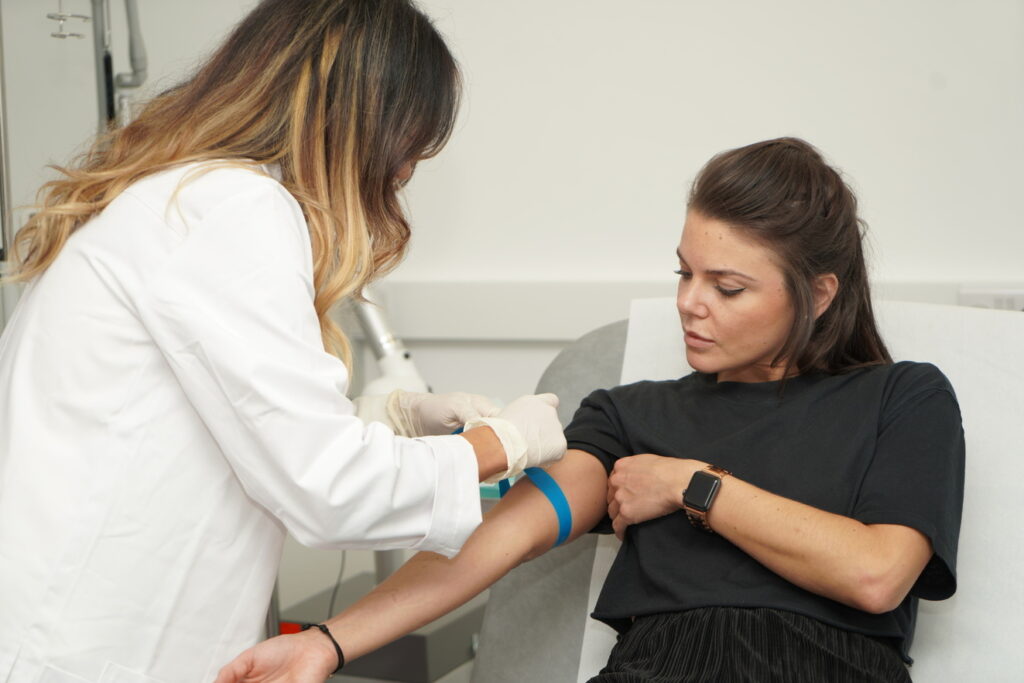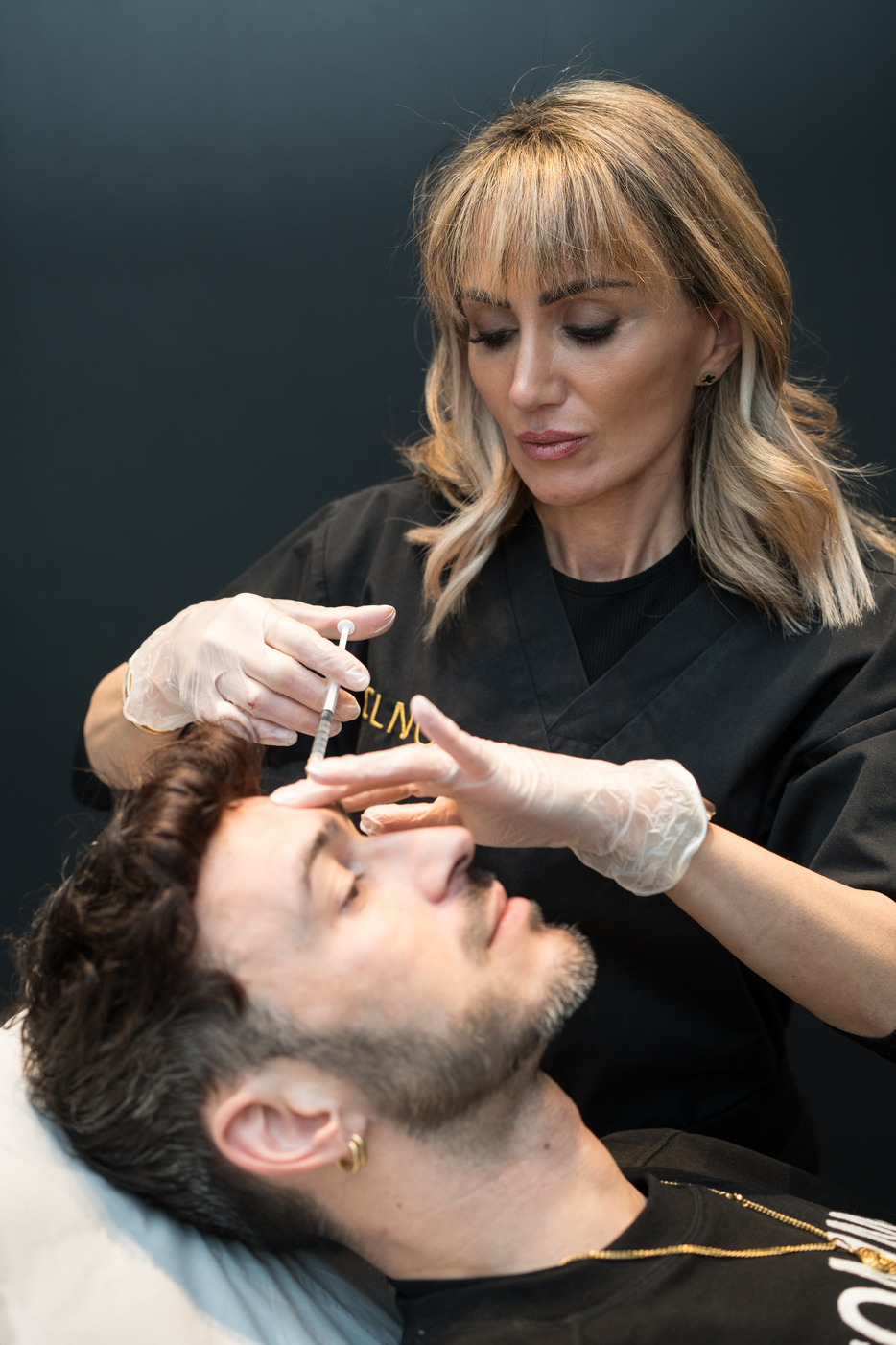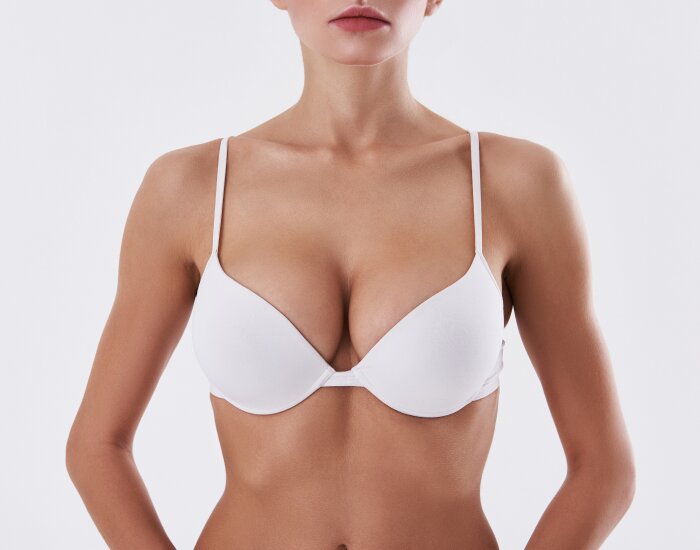If you’re searching for gentle, science-informed ways to calm inflamed skin, speed healing and support a clearer complexion, ozone therapy for skin disease is worth understanding. At our longevity clinic in Manchester and Cheshire, we use medical-grade ozone in carefully controlled ways to help the skin fight microbes, reduce oxidative stress over time (by up-regulating your own antioxidant enzymes), and nudge tissue repair. We explains what ozone therapy is, how it works for skin, who it may help, safety points, what a course at CLNQ might involve, and the evidence to date from peer-reviewed sources.
What is medical ozone therapy?
Medical ozone is a precise mixture of ozone (O₃) and oxygen (O₂) produced by a certified medical generator. Unlike the raw environmental gas, medical ozone is delivered at controlled concentrations for specific therapeutic aims, and never inhaled. In dermatology and skin-health settings, it is typically used in three main ways:
-
Topically, via ozonated oils (e.g., ozonated olive oil) or ozonated water/solutions applied to the skin.
-
Local gas exposure (“bagging”), where an affected limb or area is enclosed and exposed to ozone gas at a set concentration for a set time (with strict ventilation and scavenging).
-
Systemic approaches (e.g., autohaemotherapy) used in broader longevity/immune protocols—sometimes considered where skin disease is part of a wider inflammatory picture. These are outside the scope of purely topical skin care but may be relevant in select cases after medical assessment.
At CLNQ’s Longevity Clinic in Manchester, our ozone protocols include iv ozone therapy to support dermatological indications.
How does ozone help the skin?
In small, controlled doses, ozone acts like a therapeutic signal. It briefly generates reactive oxygen species (ROS) at the skin surface which triggers adaptive responses: your cells up-regulate antioxidant enzymes (e.g., superoxide dismutase, catalase, glutathione peroxidase) and pro-repair pathways (including Nrf2 activation). That “short-term challenge” can improve resilience and tissue oxygen handling. In addition, ozone has broad antimicrobial activity against bacteria, fungi and some viruses, helping with infection-prone conditions and biofilms.
Key skin-relevant mechanisms described in the literature include:
-
Antimicrobial action: Ozone disrupts microbial cell walls and viral envelopes, helping to control P. acnes (C. acnes), Staphylococcus aureus, candida/dermatophytes, and mixed wound flora.
-
Biofilm disruption: Useful where chronic wounds or follicular blockage involve biofilms that resist antibiotics and antiseptics.
-
Improved microcirculation and oxygen utilisation: By modulating red-cell 2,3-DPG and local nitric oxide signalling, tissues may receive and use oxygen more efficiently—supporting repair.
-
Immunomodulation: Ozone can reduce excessive inflammatory signalling while promoting a pro-healing milieu, which is relevant for chronic inflammatory dermatoses.
-
Pro-repair signalling: Low-dose oxidative “conditioning” can cue fibroblasts and keratinocytes to migrate and proliferate, aiding epithelialisation in wounds and post-procedure healing.
In short: clean the area, calm the inflammation, and cue repair—that’s the triple benefit we’re aiming for when we use ozone carefully for skin problems.
Which skin conditions might benefit?
Evidence is emerging and still growing. In our clinic we position ozone therapy as an adjunct—something that can enhance standard care and aesthetic protocols, not necessarily replace them.
Acne (comedonal and inflammatory)
Topical ozonated oils and local ozone applications can reduce bacterial load and surface biofilms while calming inflamed papules and pustules. We often combine ozone with gentle medical facials, light-based therapy and targeted topicals. Patients typically report the skin feels cleaner, less oily and less inflamed within a few sessions.
Eczema/dermatitis (adjunctive care)
For atopic dermatitis or nummular eczema, ozone’s antimicrobial and barrier-supporting effects (through lipid peroxidation products converted to more stable ozonides in ozonated oils) may reduce secondary colonisation (e.g., S. aureus) and improve comfort. We emphasise barrier repair alongside ozone—ceramide-rich emollients, trigger control, and, when needed, prescription therapies.
Psoriasis (adjunctive care)
Psoriasis is immune-driven and often stubborn. While ozone is not a cure, it can be soothing for plaques, help with scaling and micro-fissures, and may support remissions when used as part of a broader plan (vitamin D analogues, biologics where appropriate, metabolic optimisation in a longevity framework).
Fungal skin and nail issues
Ozone’s antifungal effects can assist with tinea (athlete’s foot, ringworm) and support nail-unit hygiene for onychomycosis, particularly when used with mechanical debridement and, where indicated, pharmaceutical antifungals.
Wound care & post-procedure healing
There’s promising data for chronic wounds, ulcers, and postoperative incisions, where controlled local ozone reduces bioburden and supports granulation and epithelialisation. In aesthetics, we may use topical ozone to help calm and hygienically support the skin after procedures such as microneedling, subcision, or minor lesion removal.
Herpetic lesions (adjunct)
Ozone’s virucidal and immunomodulatory actions may help reduce the viral load at the surface and support faster crusting/resolution when combined with antiviral medicines.
What does the clinical evidence say?
High-quality, large randomised trials are still limited, but systematic reviews and controlled studies in dermatology suggest ozone therapy is effective and safe as an adjunct for several skin indications:
-
A systematic review of ozone therapy in dermatology reports improvements in wound healing, infectious dermatoses and inflammatory conditions, with a favourable safety profile when medical protocols are followed.
-
Clinical studies on ozonated oils show reductions in microbial counts and improvements in lesion scores in acne and infected eczema, with good tolerability.
-
Trials in diabetic foot ulcers and chronic wounds (not purely cosmetic, but skin-healing relevant) show enhanced healing rates and less infection, supporting the pro-repair and antimicrobial rationale.
Safety: what you need to know
Medical ozone is safe when used correctly by trained doctors in a CQC registered clinic such as CLNQ in Manchester:
-
Never inhale ozone gas. Treatments are topical/local with proper scavenging or performed via ozonated liquids/oils.
-
Concentration and exposure time are critical. We use medical generators and protocols tailored to the indication (measured in μg/mL; dose = concentration × time × exposed surface).
-
Typical side-effects are mild and transient: temporary tingling, warmth, dryness or mild erythema at the site. A brief “purge” in acne can occur as the skin resets.
-
Contraindications/cautions (we screen for these):
-
G6PD deficiency (risk of haemolytic stress)
-
Uncontrolled hyperthyroidism
-
Severe anaemia or active major bleeding
-
Pregnancy (relative caution for elective treatments)
-
Severe uncontrolled asthma or COPD where inadvertent inhalation would be risky
-
Any active dermatological emergency that needs urgent medical or surgical treatment
-
-
Drug interactions: Few direct interactions are noted with topical/local use, but we review your medicines, especially if you’re on immunosuppressants, systemic retinoids, or photosensitisers, to time treatments sensibly.
At CLNQ, every patient receives a medical consultation so we can weigh benefits and risks and plan a sensible course.
Ozone therapy at CLNQ Longevity Clinic Manchester
Step 1: Skin assessment
We examine the skin, your diagnosis (or arrange one if needed), recent flare pattern, triggers, microbiome stressors, and barrier health. In complex cases (e.g., refractory acne, recurrent infections, non-healing wounds) we may coordinate with your GP/dermatologist or run supporting investigations (vitamin D, iron, HbA1c, thyroid, microbiology where relevant).
Step 2: Personalised ozone protocol
We match the delivery to the condition:
-
Acne/folliculitis:
-
Ozonated water cleanse → local ozone exposure (bagging/hood) for problem zones → ozonated oil as a home adjunct.
-
Combine with non-comedogenic skincare, LED light therapy and, if indicated, prescription topicals.
-
-
Eczema/dermatitis:
-
Short, gentle local ozone to reduce colonisation, followed by barrier-repair emollients.
-
Trigger coaching (fragrance, detergents, sweat, wool, stress), and medical therapy as needed.
-
-
Psoriasis:
-
Targeted local ozone for plaques plus keratolytics/emollients; consider systemic/longevity optimisation (weight, insulin resistance, vitamin D) in conjunction with your specialist plan.
-
-
Fungal/tinea/onychomycosis:
-
Local ozone to skin and nails, adjunctive debridement, ozonated oil between sessions; footwear and moisture advice.
-
-
Wounds/post-procedure:
-
Local ozone after cleansing to decrease bioburden and support granulation, then sterile dressings and post-op aftercare.
-
Step 3: Session rhythm
-
Frequency: Typically 1–2 sessions per week initially, then taper as the skin stabilises.
-
Duration: 15–30 minutes per area per session, depending on the protocol.
-
Course length: Many people notice benefits within 3–6 sessions, while chronic conditions may require 6–12+ sessions with maintenance.
Step 4: Combining with longevity care
Because many skin conditions are systemic-inflammatory or barrier-metabolic in nature, we can integrate ozone with broader longevity strategies: sleep, stress, nutrition (including omega-3s and micronutrients), vitamin D optimisation, light-based therapies, and, where appropriate, adjuncts such as hyperbaric oxygen therapy or photobiomodulation. The goal is healthier skin that lasts, not just a quick fix.
Who is a good candidate?
-
You have acne, eczema, psoriasis, recurrent folliculitis, fungal skin issues, or slow-to-heal skin and want a non-drug adjunct to amplify your results.
-
You prefer evidence-led, minimally invasive approaches delivered by medical professionals.
-
You’re willing to follow a complete plan—skincare, triggers, lifestyle—and attend a course of treatments rather than a one-off.
If your condition is severe, rapidly worsening, or atypical, we’ll prioritise further medical work-up before starting.
Benefits you can realistically expect
-
Calmer, cleaner skin as bioburden reduces
-
Fewer inflammatory lesions (acne) and less itch (eczema)
-
Faster healing after minor procedures or in chronic wounds
-
Improved comfort and barrier function, with better tolerance of active skincare
-
Low downtime, with treatments that are quick and well-tolerated
As always, results vary—your skin biology, adherence, and any underlying conditions play a role.
Aftercare and home support
-
Keep it simple: gentle, fragrance-free cleanser; ceramide-rich moisturiser; non-comedogenic SPF.
-
Use ozonated oil as advised between sessions for hygiene and micro-support without stripping the barrier.
-
Avoid harsh actives (e.g., strong retinoids, high-strength acids) for 24–72 hours after sessions unless we advise otherwise.
-
Nourish from within: adequate protein, omega-3s, and vitamin D; go easy on ultra-processed foods and high-glycaemic spikes.
-
Track triggers: sweat, friction, stress, lack of sleep—address what you can.
Why choose CLNQ for ozone therapy in Manchester & Cheshire?
-
Medical Doctor-led: Treatments led by experienced doctors with strict protocols and medical-grade equipment.
-
Personalised longevity plans: We treat skin as part of your whole-body health—improving the terrain that drives flare-ups.
-
Integrated care: From medical facials and light therapy to post-procedure support and wound care, we tailor your pathway.
-
CQC Registered Clinic: Our clinics are CQC registered which means they are regulated medical clinics and our recent inspection had a ‘Good’ rating.
Frequently Asked Questions
Is ozone therapy safe for skin?
Yes—when delivered with medical-grade equipment and proper protocols, ozone therapy for skin is generally well-tolerated. The gas is not inhaled, and we use concentrations and exposure times tailored to your indication. Mild, temporary redness or dryness can occur.
Can ozone therapy treat acne?
It can help as an adjunct by reducing C. acnes load and calming inflammation. We often combine ozone with skincare, LED/light therapy, and, when indicated, prescription treatments. Many patients notice fewer breakouts and quicker resolution of active lesions over a short course.
What about eczema or psoriasis?
Ozone can reduce colonisation (e.g., Staph on eczema skin) and support barrier repair. In psoriasis, it may soothe plaques and aid scaling control as part of a broader plan. It is not a cure, but it often improves comfort and appearance when correctly integrated.
How many sessions will I need?
For acne or infected eczematous patches, expect an initial block of 3–6 sessions over a few weeks. Chronic or nail-unit issues often need 6–12+ sessions. We’ll review and adjust based on your response.
Is there downtime?
Minimal. You can usually return to daily activities immediately. We advise gentle skincare for 24–72 hours after a session.
Who should avoid ozone therapy?
People with G6PD deficiency, uncontrolled hyperthyroidism, severe anaemia, or those who are pregnant (for elective therapies) should avoid or delay treatment. We’ll screen you during consultation.
Can I combine ozone with other treatments?
Yes. We frequently combine ozone with medical facials, LED/light therapy, microneedling aftercare, wound support, and standard dermatology treatments. It’s a complement, not a replacement.
How much does ozone therapy cost in Manchester?
Pricing depends on the area treated and course length. Please contact CLNQ for current fees and package options.
Book a consultation
If you’re considering ozone therapy for skin disease in Manchester, our longevity-focused doctors will assess your skin, tailor a plan, and guide you through a safe, effective course. Get in touch to start a personalised programme for calmer, healthier skin.
References
-
PubMed (2022/2023) – Clinical insights into ozone therapy mechanisms and dermatological applications. PubMed ID: 36527235
-
PMC Review – Comprehensive overview of medical ozone’s biochemical effects, antimicrobial action, and clinical uses in skin conditions. Open-access article: PMC9122276
-
Indian Journal of Dermatology (2022) – “Effectiveness and safety of ozone therapy for dermatological diseases”: review of indications, outcomes, and adverse events. Journal link: LWW/IJD

















